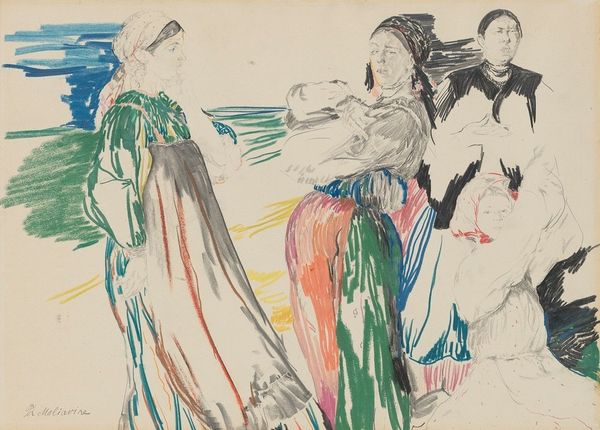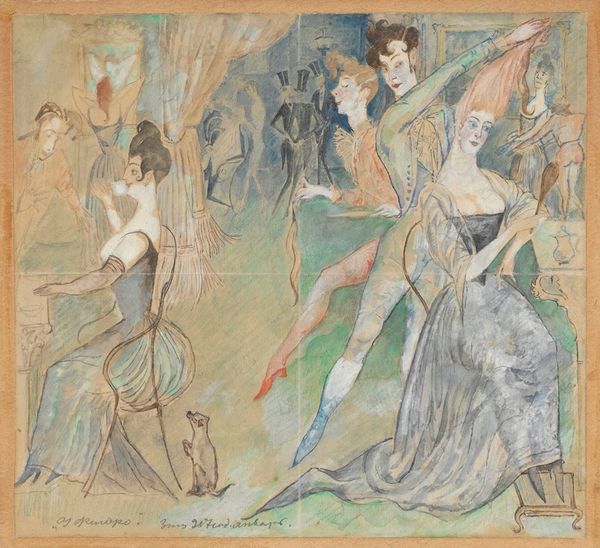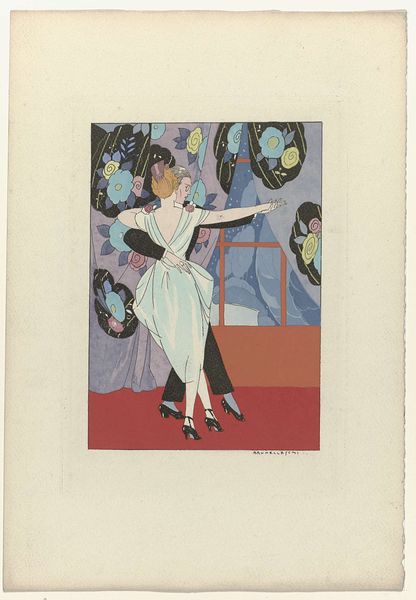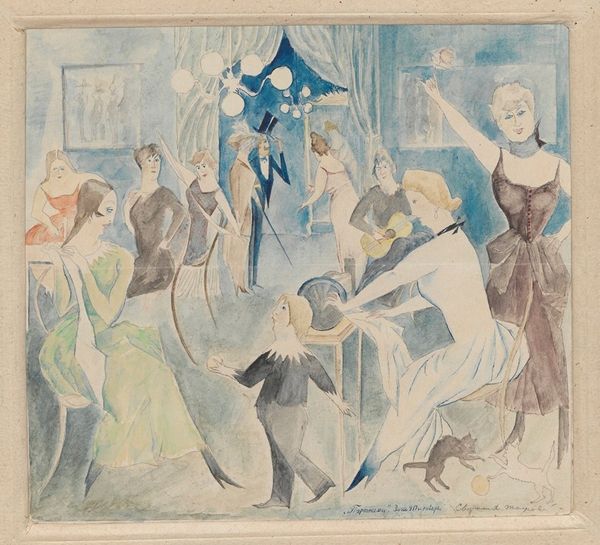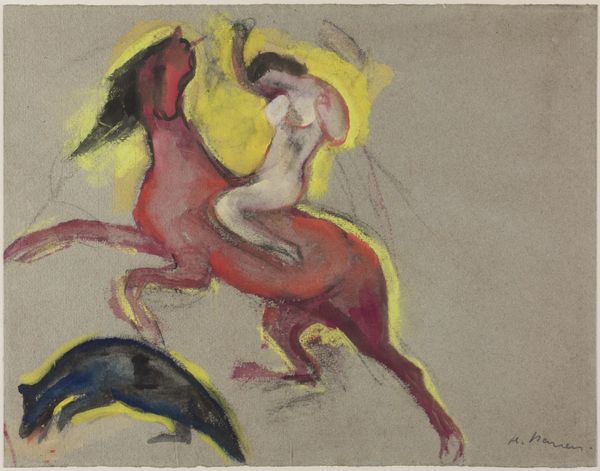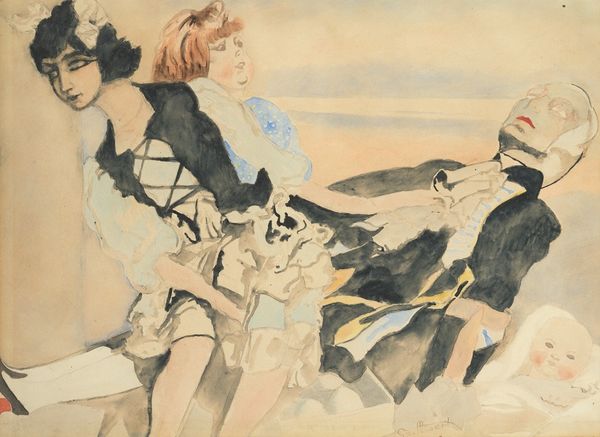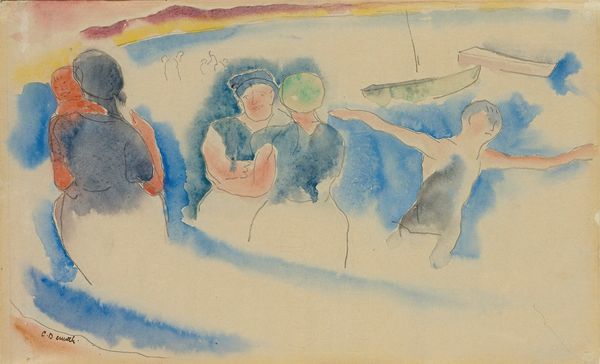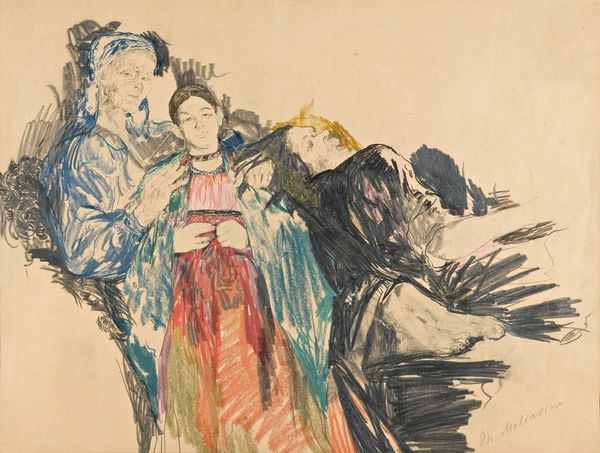
Copyright: Public domain
Editor: This is "Vaudeville Dancers" painted by Charles Demuth in 1918, created with watercolor. I'm really drawn to the dreamy, almost ethereal quality of it, with the landscape in the background and then the dancers... How do you interpret this work? Curator: What captures me immediately is the rainbow, arcing like a promise over these figures. Consider the context - 1918, the tail end of the Great War. Could this be a yearning for brighter times, embodied in the fleeting entertainment of vaudeville? Do the translucent dancers suggest ephemeral joys against the backdrop of ongoing turbulence? Editor: That's fascinating, I hadn't considered the historical context like that. I saw the rainbow as just a sort of, pretty backdrop. Curator: It is that too! Demuth was no stranger to symbolism, and rainbows often represented hope and divine promises. Note also how the figures aren’t distinctly individualised, rather blending as a visual form. Could this denote a universal longing, amplified perhaps through their dance as a communal activity? Editor: So, the choice of subject matter, combined with that dreamlike rendering... it adds a layer of depth beyond just a simple scene. Curator: Precisely! How else can you perceive their interaction amongst this painted background? Editor: Looking closer now, there's an inherent sadness, even loneliness in that position...It is if one is seeking out companionship with the other turning away... Curator: I find myself more intrigued by your astute observation, I think there is much to learn and still find with this watercolour, particularly as to what this specific genre piece holds. Editor: Well, I never would have thought to consider how social trauma and historical context can really shape art and how symbolism adds to it. Thanks!
Comments
No comments
Be the first to comment and join the conversation on the ultimate creative platform.
